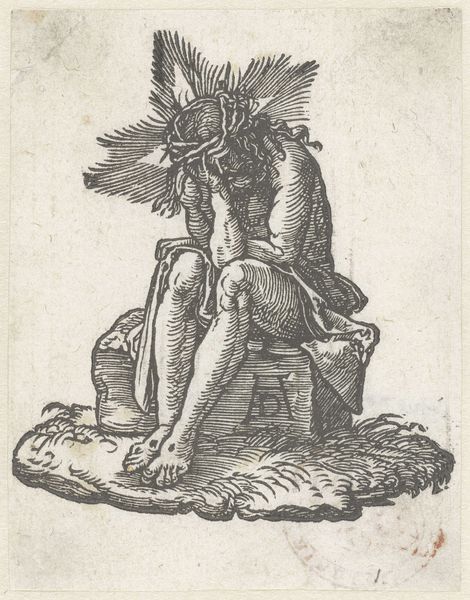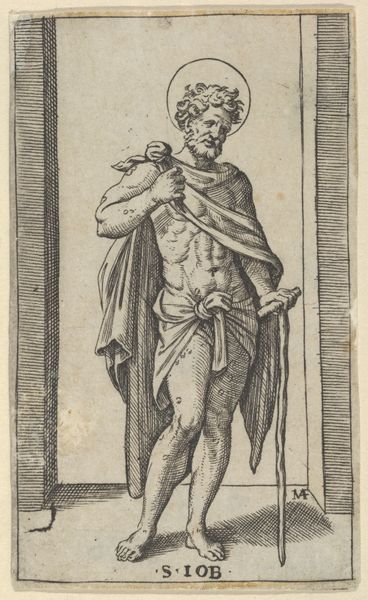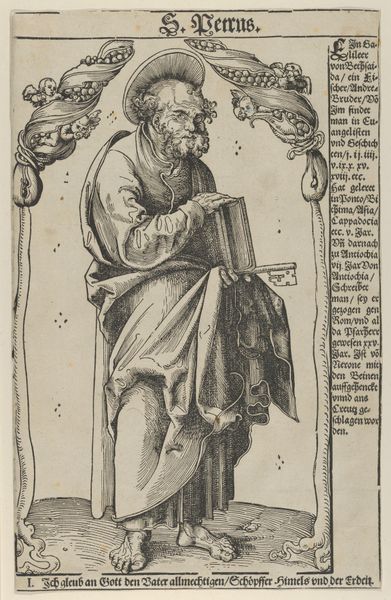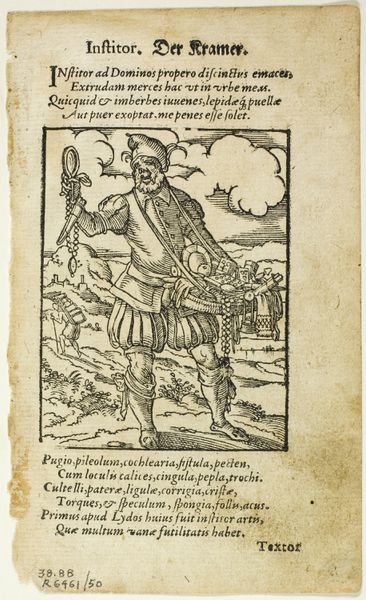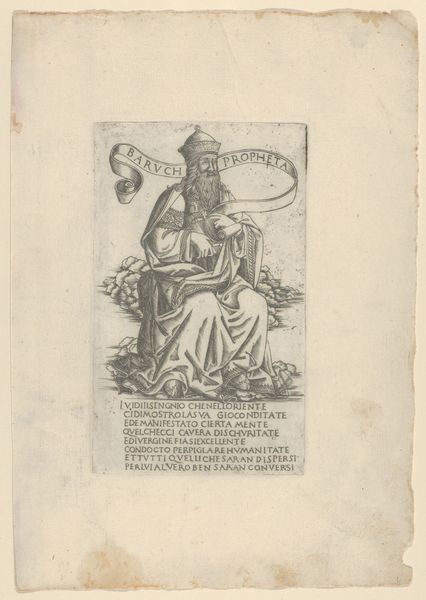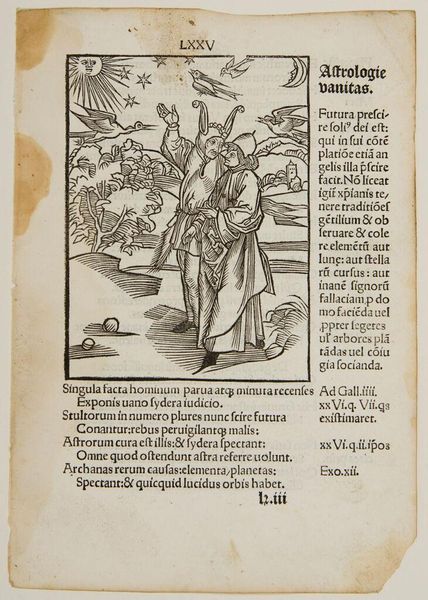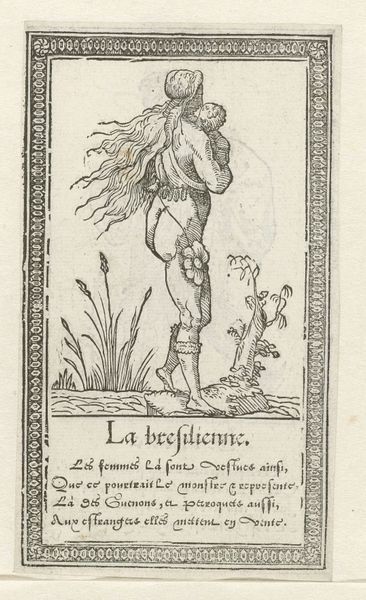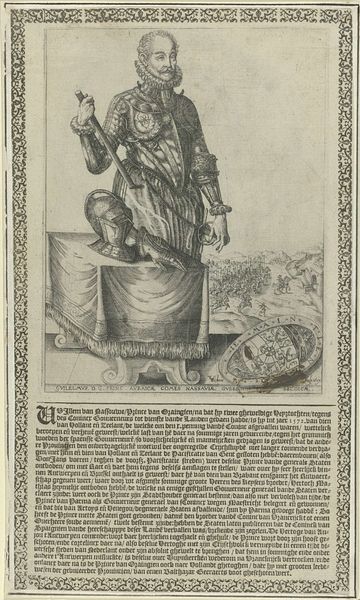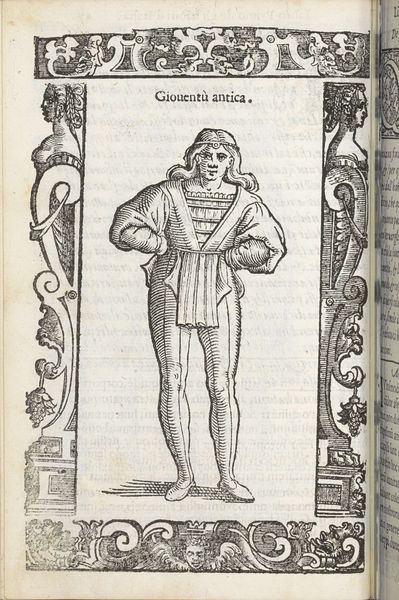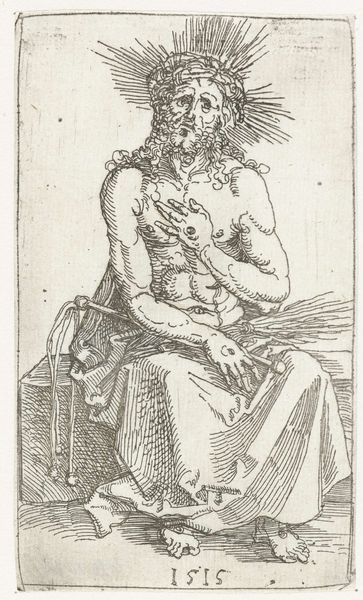
The Man of Sorrows Seated, title page of "The Small Passion" 1511
0:00
0:00
Dimensions: sheet: 4 1/2 x 3 9/16 in. (11.4 x 9 cm) Latin text on back: 4 11/16 x 3 11/16 in. (11.9 x 9.4 cm)
Copyright: Public Domain
Curator: This is "The Man of Sorrows Seated," the title page for Albrecht Dürer's "The Small Passion," created in 1511. It's an engraving, showcasing Dürer's mastery of the medium. Editor: Immediately, I’m struck by the overwhelming feeling of anguish that emanates from the figure. The deep, etched lines contribute to this sense of suffering; the print feels charged with emotion. Curator: Dürer created this work within a complex sociopolitical and religious context. The rise of humanism and the stirrings of the Reformation deeply influenced his art, shifting the focus to individual emotional experience, especially with such an iconic figure. Editor: I notice the stark contrast between the figure of Christ, burdened by the crown of thorns and hunched in grief, and the almost luminous halo radiating from behind his head. It's such a poignant visual paradox. It speaks to divine suffering, doesn’t it? A God experiencing very human sorrow. Curator: Precisely. Dürer's portrayal challenges viewers to confront the implications of religious persecution and spiritual despair. We must remember that the era that made the work possible, an early, tentative, printing industry, helped it also reach a wider audience in Europe and affect more cultural attitudes. Editor: And the deliberate display of the stigmata underscores Christ’s sacrifice but also the pain inflicted upon his body. How the image resonates differently as we consider historical attitudes toward male pain, the performative element of sacrifice and also of masculine power… Curator: Absolutely, we can look at Dürer through many intersectional narratives that engage with identity, gender, and social conditions that enable violence against non-conforming bodies. It challenges our notions of the body and pain, and asks us how the symbolic image is also a historically weighted image. Editor: Seeing it through that lens enriches the work for me. There's more here than initially meets the eye. Curator: Yes, Dürer's profound exploration of both religious narrative and socio-political tension solidifies the place of “The Man of Sorrows” as a meditation on suffering, power, and hope, during that critical moment of immense societal change in Europe.
Comments
No comments
Be the first to comment and join the conversation on the ultimate creative platform.
